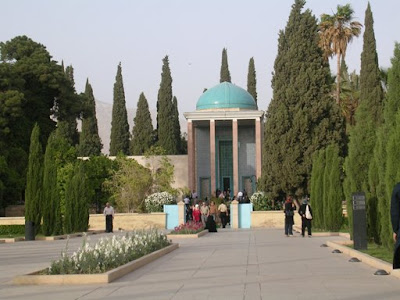
The Azadi Tower (Persian: برج آزادی, Borj-e Azadi meaning in English: Freedom Tower) (previously known as the Shahyad Aryamehr Persian: شهیاد آریامهر, English: King Memorial Tower) is the symbol of Tehran, Iran, and marks the entrance to the city.
Built in 1971 in commemoration of the 2,500th anniversary of the Persian Empire, this "Gateway into Iran" was named the Shahyad Tower (meaning "Remembrance of the Shehs (Kings)") but dubbed Azadi (Freedom) after the Iranian Revolution of 1979. It is the symbol of the country's revival, and intended to remind coming generations of the achievements of modern Iran under the Pahlavi Dynsty. It is 50 metres (148 feet) tall and is completely clad in cut marble.
The architect, Hossein Amanat, won a competition to design the monument. Ironically, he practices a religion — the Bahai Faith — that is persecuted by the current government. Azadi Tower combines Sassanid and Islamic architecture styles. Amanat also integrated a degree of Baha'i symbology in the design, such as having exactly nine stripes on each side, and exactly nine windows either of the long sides of the building. It is part of the Azadi cultural complex, located in Tehran's Azadi square in an area of some 50,000 m². There is a museum and several fountains underneath the tower.
On February 11, 2007, during the celebration of the 28th anniversary of Iran's Islamic revolution, an Iranian man named Amir Moussavi, 32, fell to his death in front of tens of thousands celebrating while free climbing the tower. He was only three meters from the top when exhaustion set in and he was unable to climb anymore.











